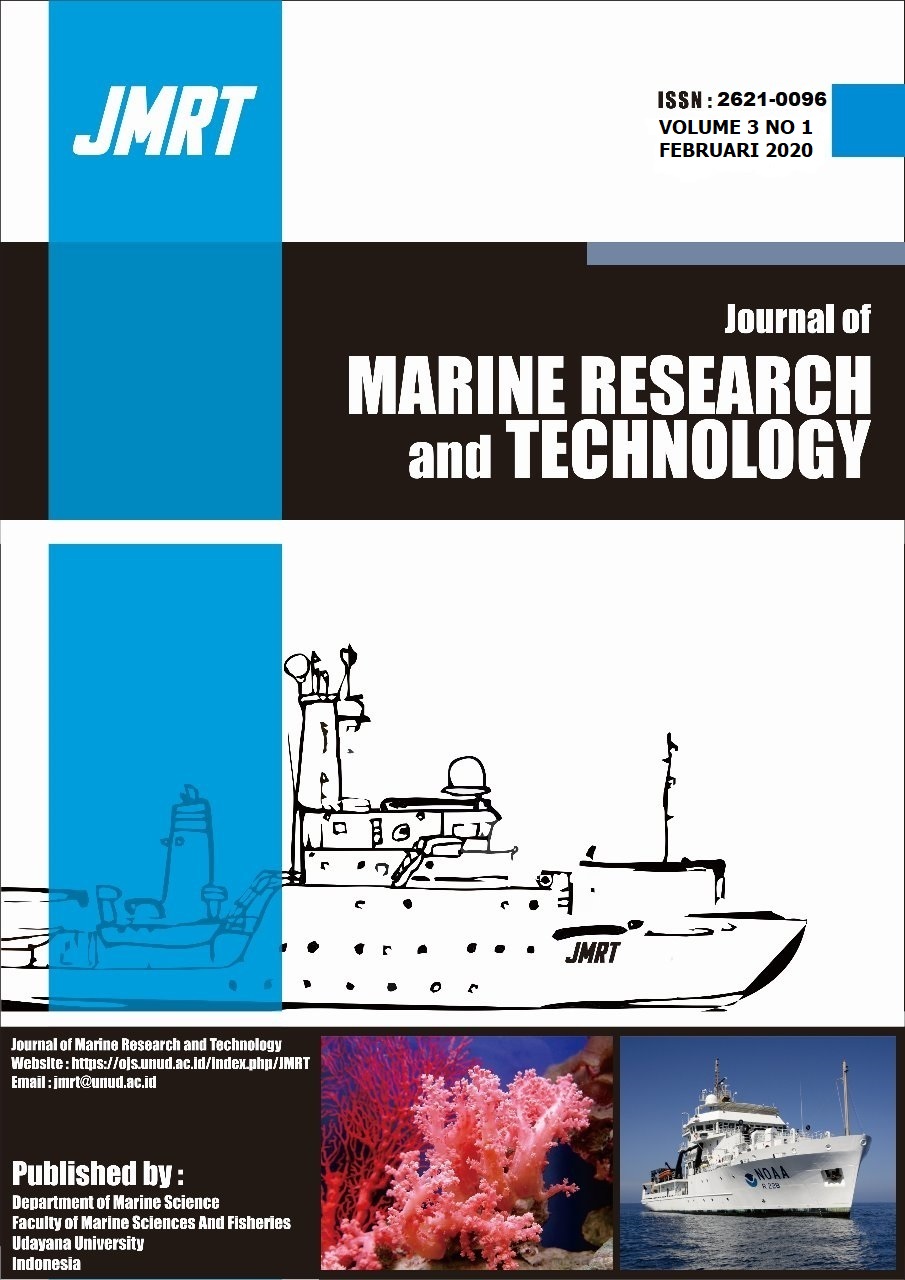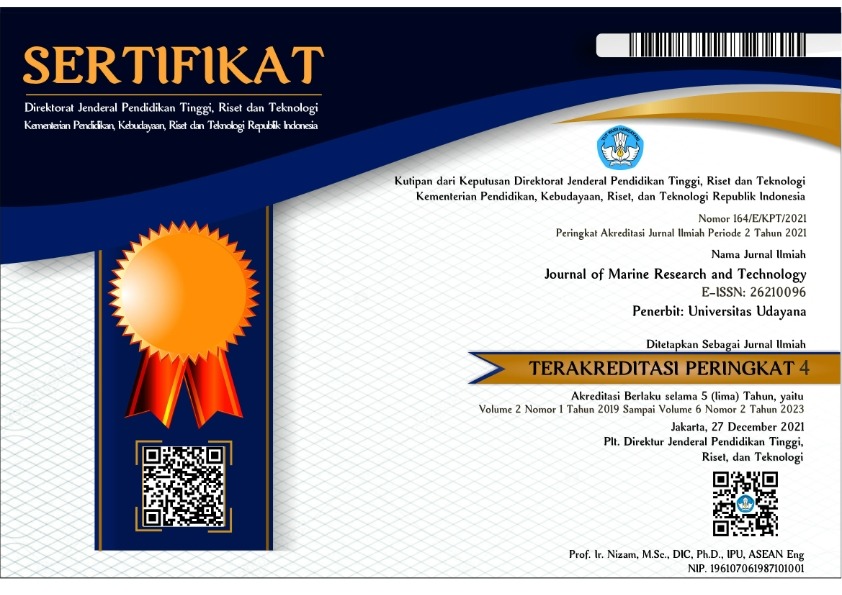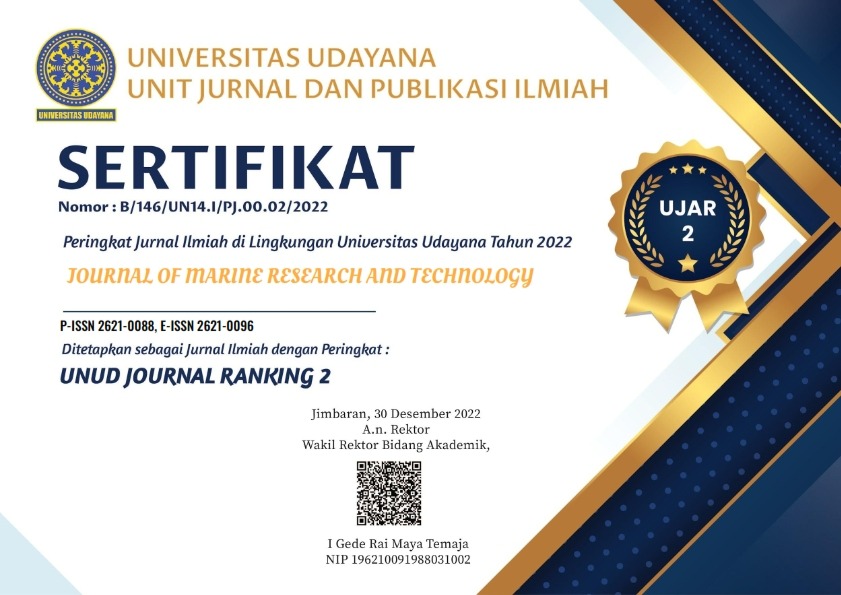Karakteristik Vertikal Salinitas dan TDS di Perairan Amed dan Tulamben, Karangasem, Bali
Salinity; TDS; Temporal; Vertical; Amed and Tulamben
Abstract
Amed and Tulamben waters are marine tourism areas located in the western part of the Lombok Strait, which have enormous biodiversity and conservation potential. The abundant biodiversity in the area is because of the process of transporting water masses vertically carrying biogenic and non-biogenic components. Salinity and TDS have an important role in regulating the process of bio-geo-chemical waters. Thus, it can be a parameter in understanding the vertical characteristics of the waters. The purpose of this research was to determine the vertical characteristics of temporal salinity and TDS in these waters. Data was collected for 14 days (February 20 to March 5, 2019) at two locations, namely Batu Niti and Emerald. The data collection method was carried out by reducing the CTD to a depth of approximately 95 meters with a measurement interval of 10 minutes for 2 to 3 hours per day. The results showed that salinity and TDS had a very strong correlation (r = 0.9995). Salinity concentrations ranged from 31.83 to 34.19 PSS, and TDS concentrations ranged from 31,211.12 to 33,396.71 mg l-1. The halocline layer had a gradient characteristic ? 0.01 PSS m-1 found from a depth of 20 meters, while a homogeneous layer was formed above it to a depth of 6 meters. The halocline layer had a higher level of water mass stability (N) than the homogeneous layer. The maximum rate of change in salinity and TDS was found at a depth of 70 meters. The great variability of salinity and TDS in the water column was indicated by the influence of internal tidal currents. Before the highest tide conditions, salinity and TDS have highest variability that compared to the highest tide condition and after its condition.
Downloads
Copyright Notice
The copyright to this article is transferred to Journal of Marine Research and Technology (JMRT). The copyright transfer covers the exclusive right and license to reproduce, publish, distribute and archive the article in all forms and media of expression now known or developed in the future, including reprints, translations, photographic reproductions, microform, electronic form (offline, online) or any other reproductions of similar nature.






